This is the 5th time I have been to a congress in Osnabrück. So far, I have walked back and forth between the castle, various university buildings and some gymnasiums without paying much attention to the old town of Osnabrück. But this time it was different.
This time I didn’t keep getting on buses to get from A to B, I walked. Always criss-crossing the old town of Osnabrück. When I looked at my pedometer one evening, dead tired, I actually counted 32,000 steps.
One evening – I reached the hotel completely knackered – a look at my fitness tracker told me that I had done 32000 steps in one day. And what I discovered in Osnabrück between three presentations and two workshops…
The Town Hall of Osnabrück
The late Gothic town hall was built in 1512. Back in the day, it was a modern building, meant to represent the political power and significance of Osnabrück. The hip roof is 18 meters high and surrounded by 6 little towers. The front is decorated with little figurines. Two staircases lead up to the main portal from either side. It was here that the Peace of Westphalia was declared and the Thirty Year’s War found its end. This peace treaty is regarded as the first step towards a united Europe. The Hall of Peace can be visited, it currently is home to the Golden Book of the City.

As part of one of our workshops, we performed a dance in front of the town hall. Too bad, no one from inside the building applauded.
The Churches of Osnabrück
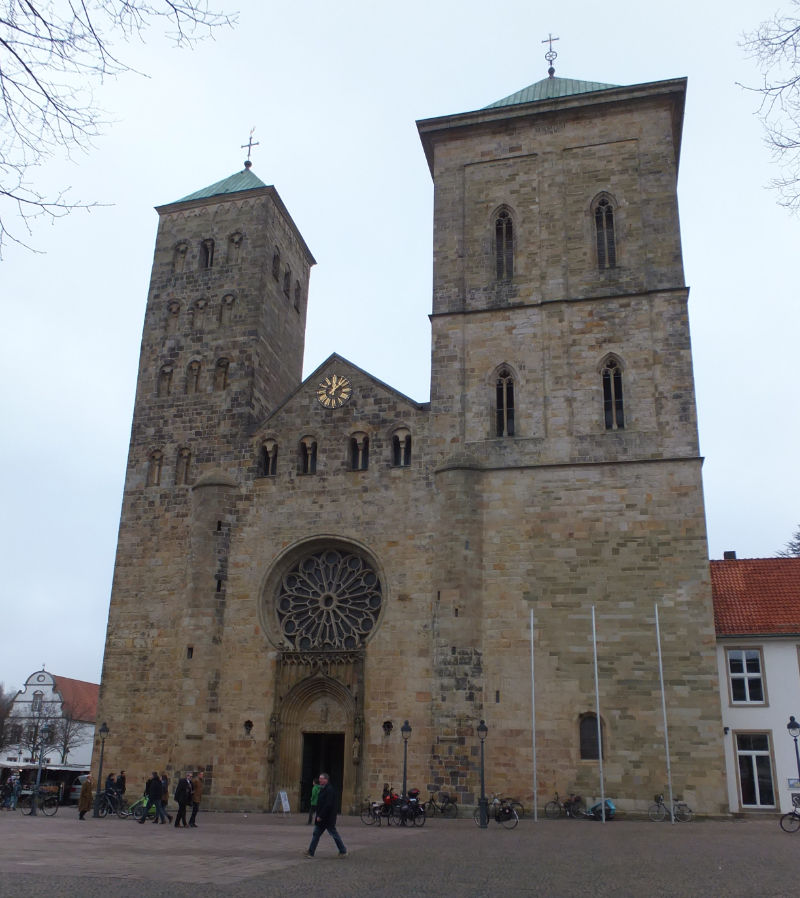
I only noticed that in a few cities so far, but it is fascinating how many churches can be found in the city centre of Osnabrück. I only took pictures of them in passing, the time I had was by no means enough to visit them all properly. The St. Petrus Cathedral was erected in the times of Charles the Great and remains the centre of the bishopric to this day.
Just next to the town hall is the gothic St. Mary church and only a few meters further down, a short walk on foot, you find the gothic St. Katharien church. Its tower is 103 high and rises above pretty much everything else in the Old Town. That came in handy for me and my bad sense of directions; the tower was a good way marker that guided me through the town. On my seven-leagues-boots day, I also passed the St. Johann church and another really gorgeous church next to the cathedral school. I am sure there are many more churches dotted around the city and I sincerely hope I get the opportunity to visit them on another occasion that isn’t a congress visit.

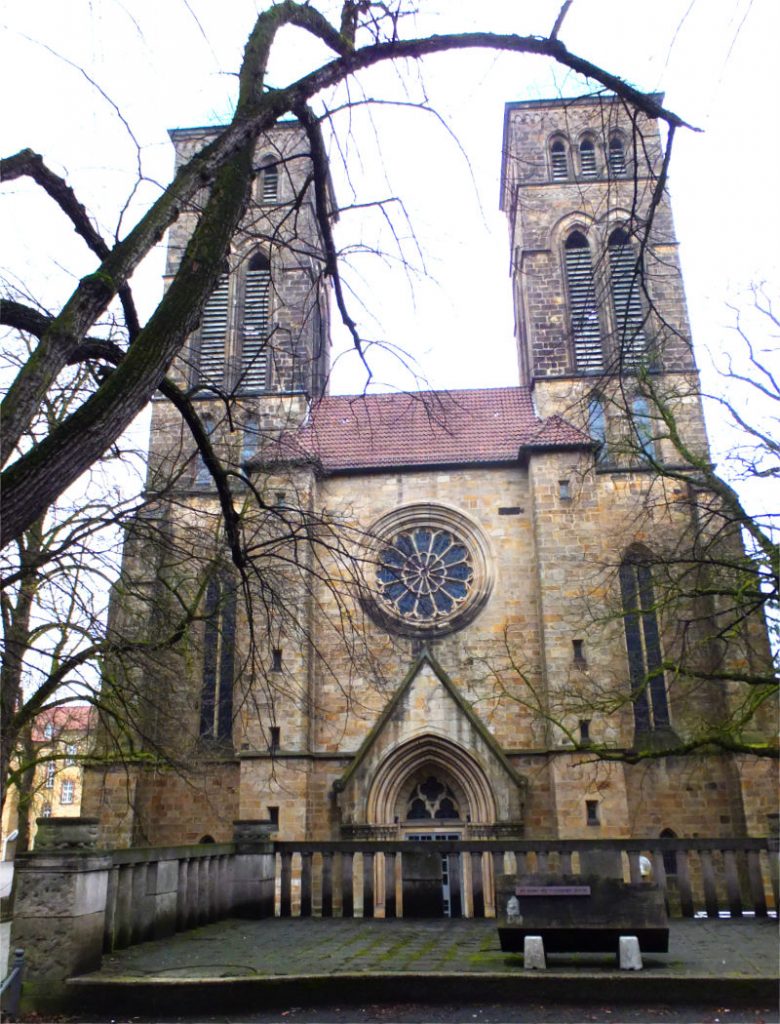
Ledenhof
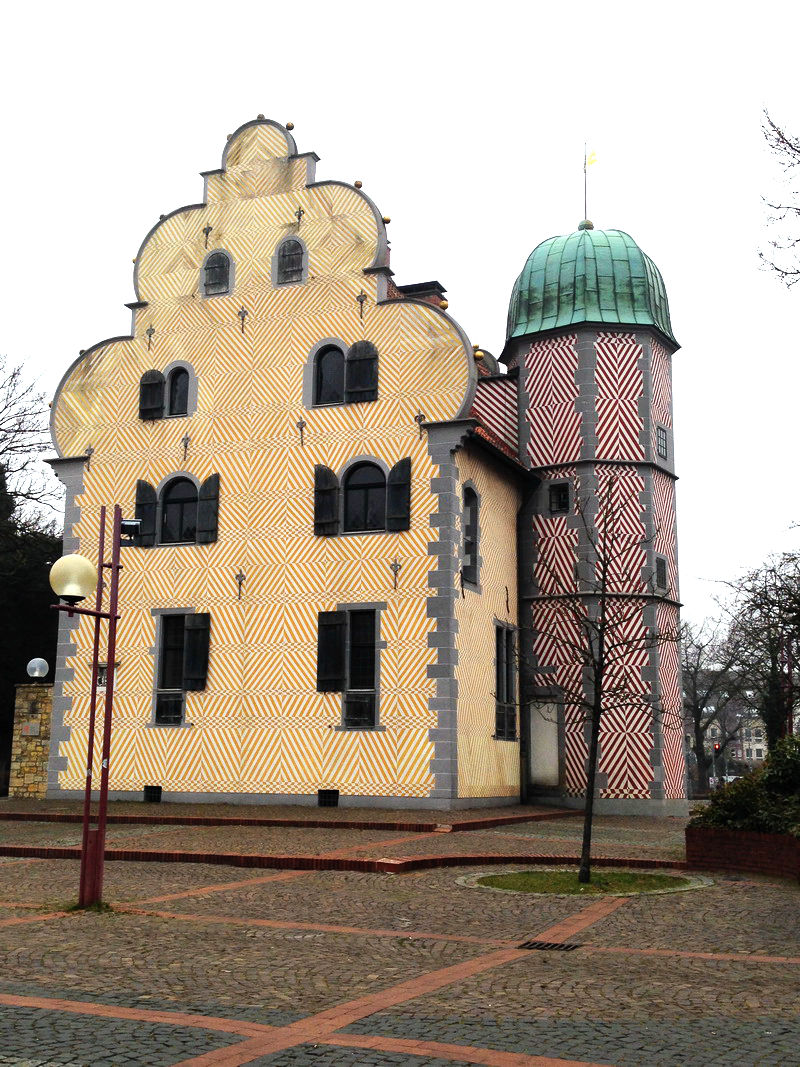
Opposite the Osnabrück Event Hall, in which our conference was held, is the Ledenhof. The building has a somewhat flashy façade which was really the reason why I came over to have a look in the first place. The manor was owned by the Leden family and is one of the most important buildings in Osnabrück. It consists of a main building and a tower that holds the staircase. The diagonally painted on pattern on the façade was recreated after historic models.
Castle Osnabrück
Some of the events of the congress took place in the four wings of the baroque Castle of Osnabrück. Today, the castle mainly serves as space for the university. Earlier, in the years that followed the Peace of Westphalia in 1648, it was the representative seat of the prince-bishop. The castle garden has a very open layout and serves as a venue for open-air concerts and events.
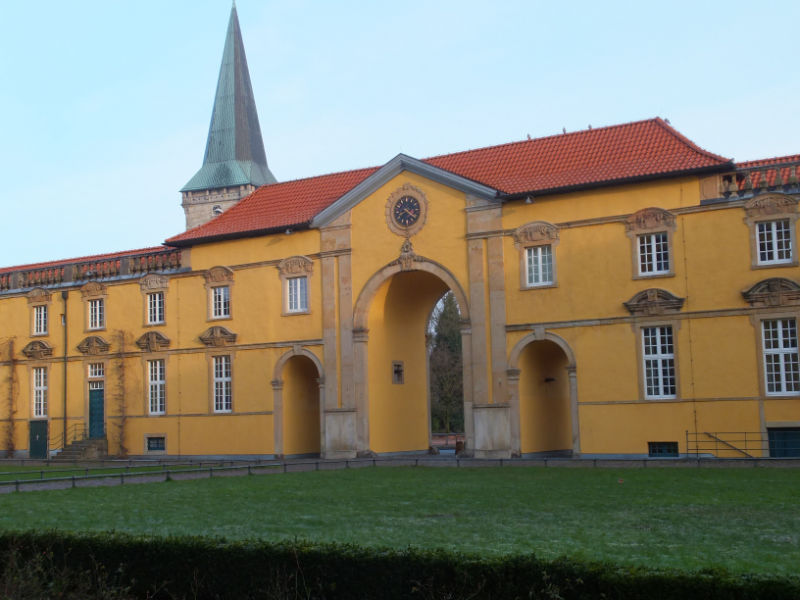
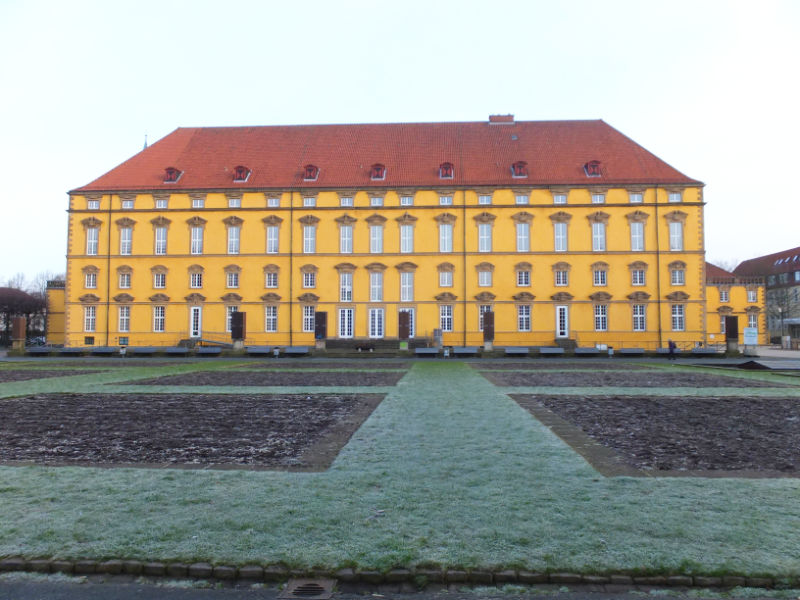
Bucksturm – protection for the old town of Osnabrück
Osnabrück was once surrounded by a city wall with several watchtowers. The Bucksturm (formerly also Bocksturm) is one of these watchtowers, which stands between the Heger Tor and the Natrup Tor.
The tower was built around the 13th century. It has only relatively small embrasures, which indicates that there were never cannons in the tower, but that the defence was only carried out with the help of small arms.

In the Middle Ages, the tower was used as a prison. In the time of the witch hunts, a torture chamber was housed there, which was still there in the early 20th century. Today you can see an exhibition on the subject there.
Bürgergehorsam
Another defence tower in front of the old town of Osnabrück is the “Bürgergehorsam”. The tower was built in 1517-1519 and is the youngest defence tower in the city. The steep roof with the lead covering was not placed on the tower until around 1542. Even from the outside, it is easy to see that the embrasures in this tower are somewhat larger. During a tour of the tower, one could also clearly see the powder discharge openings. This indicates that there were cannons in the tower that were used for defensive purposes.
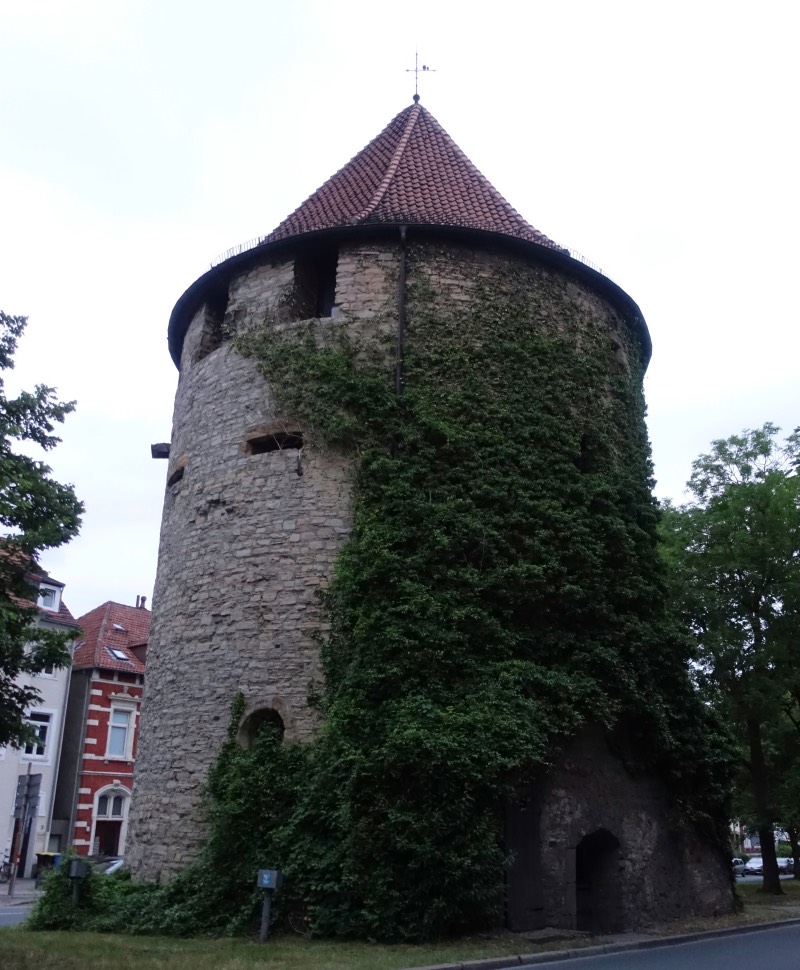
During a tour with the Osnabrück night watchmen through the old town, I reached the inside of the tower via a spiral staircase (added later). The outer walls are up to 3.5 metres thick and the air immediately cooled noticeably.
In the tower I then also learned why the tower bears the name “Citizens’ Obeyance”. Here I found a room where citizens were locked up for minor offences and crimes.
Waterloo Gate or Heger Gate
Among tourists, the Heger Tor is known only as the Waterloo Gate. It is not, as is often claimed, an old city gate but a monument.
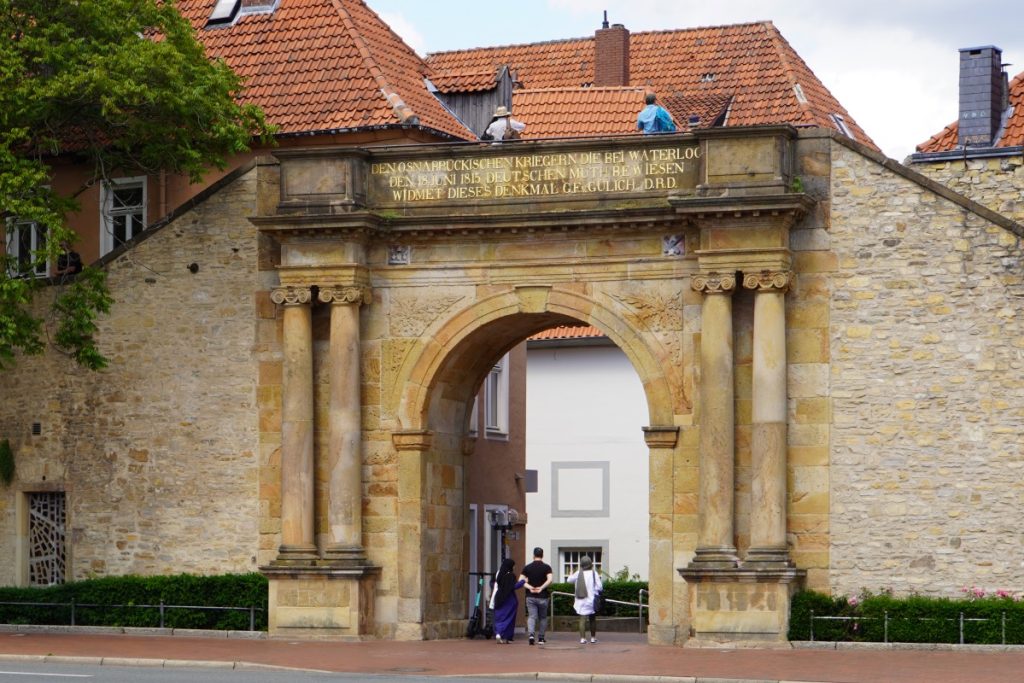
In 1815, many soldiers from Osnabrück took part in the Battle of Waterloo. In their honour, an Osnabrück citizen donated the handsome sum of 1000 talers in 1816 so that a memorial could be erected.
A triumphant arch-like gateway was erected at the historic fortification at Heger-Tor-Wall, which was demolished in 1815. The building is somewhat reminiscent of the Arch of Titus in Rome. Above the archway is the inscription in golden letters:
„DEN OSNABRÜCKISCHEN KRIEGERN DIE BEI WATERLOO
DEN 18.JUNI 1815 DEUTSCHEN MUTH BEWIESEN
WIDMET DIESES DENKMAL G.F.v.GÜLICH D.R.D.“ (“TO THE OSNABRÜCK WARRIORS WHO SHOWED GERMAN COURAGE AT WATERLOO 18.JUNE 1815 GERMAN COURAGE PROVED this memorial is dedicated to g.f. v. gülich d.r.d.”.)

When you walk up to the gate, you have a beautiful view of the old town of Osnabrück.
…what else
Walking through the city with open eyes and an open mind will make you discover many nice opportunities for a little shopping and some really magnificent old buildings.
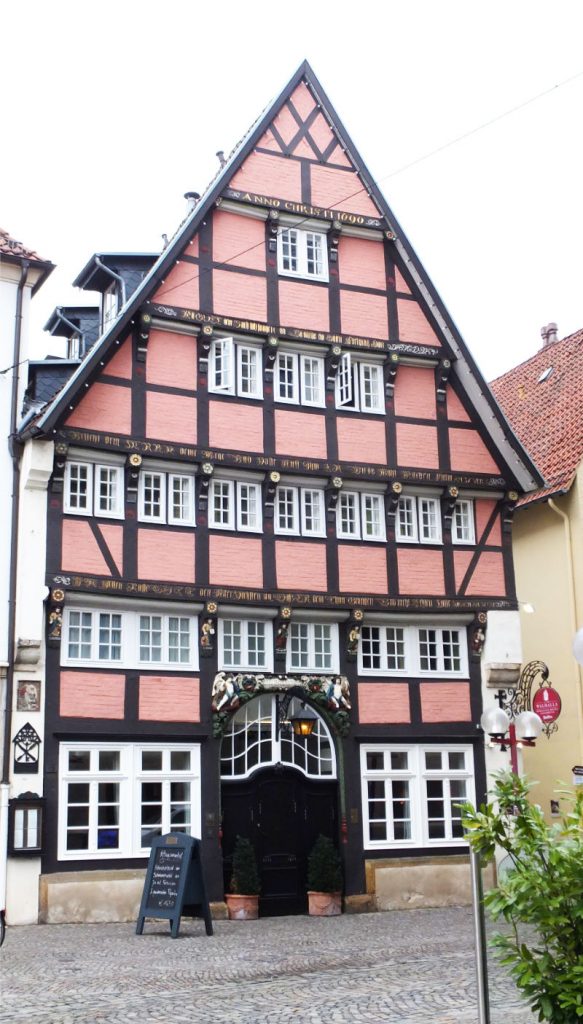
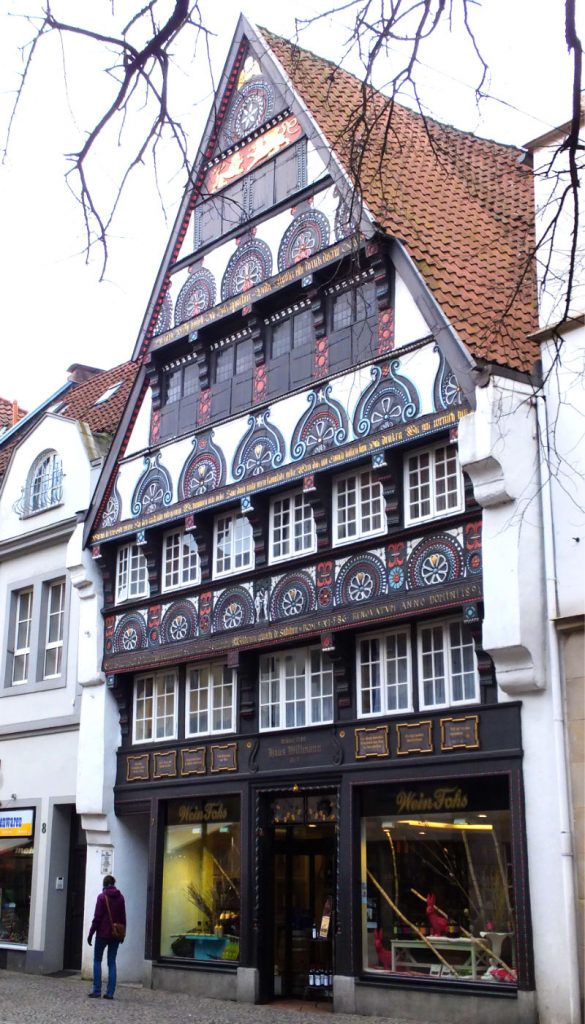
After 32000 steps I was convinced, this city deserves another visit.



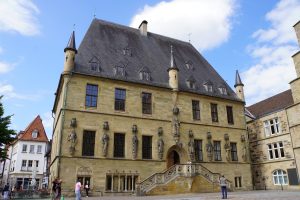
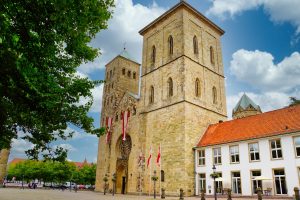



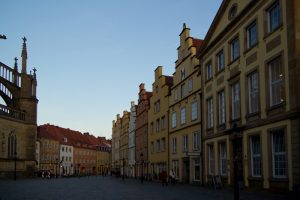
Leave a Reply